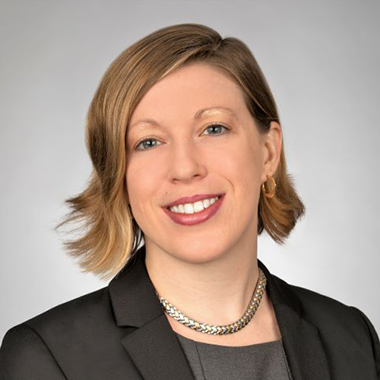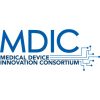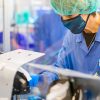Last month Pulvinar Neuro, a subsidiary of Electromedical Products International (EPI), received a three-year, $3.06 million Phase II SBIR grant from the NIH’s National Institute of Mental Health (NIMH). The money will be used to develop a cloud-enabled transcranial stimulation device that delivers personalized closed-loop brain stimulation for clinical and at-home applications. The grant also includes funding for a double-blind, placebo-controlled study of the cloud-enabled TCS device in 30 patients with major depressive disorder.
We spoke with Leah Townsend, Ph.D., chief science officer at EPI, to learn more about the development of the device and potential applications of the technology.
Could you tell us a little bit about your technology and the potential indications for TCS?
Townsend: What we’re doing is a form of transcranial stimulation called transcranial alternating current stimulation. There are several different types of transcranial electrical stimulation. The alternating current stimulation applies a sine wave as the electric waveform, and you can choose different frequencies. Our work is currently focused on 10 Hertz, which has implications in depression and the underlying circuit dysfunction that leads to very depressive symptoms.
Where physicians and patients have long relied on pharmaceutical interventions, we now know that mental and behavioral health disorders are the result of changes in patterns of brain cell activity. With transcranial electrical stimulation, what we are attempting to do is shift or modify the underlying electrical patterns that appear to be causing symptoms of depression through the placement of electrodes that enables that 10 Hertz current to pass through the skull.
Is this something that can be used at home, or would it be used in a healthcare setting?
Townsend: Our first version, which was funded under the NIH grant, is going to be an in-clinic product. In the clinic you can control different variables, because you have a trained practitioner who’s overseeing the set up and operation of the device.
Our product has an EEG built in so we can record the patient’s brain activity in real time and decide when to stimulate. It is a very targeted and personalized treatment, so we are starting in the clinic. But part of the grant does allow us to connect our closed loop device—the EEG plus the stimulation—to our cloud-based software, which will enable remote study management.
Step one is to connect our product to the Cloud as part of a small clinical trial for depression. The next step is to miniaturize the device and do additional design work to make sure it’s user-friendly and something that could be done in the home. That is where we’re headed, it’s just a couple steps away.
Why was this an area of interest for the NIH?
Townsend: This is funded under the Small Business Innovation Research Grant (SBIR). The NIH has a pool of money that is Congressionally mandated to help foster and encourage commercialization of innovations that are produced from academic research in this country. The funding is set aside for small business research to commercialize innovative technologies.
Part of the NIH’s interest in our technology is that it enables large-scale study and manipulation of brain circuits, so it may help create tools that can be used for large-scale research into mental health challenges. It would enable high-quality, gold standard clinical trials at scale of neuromodulation technologies, which we currently don’t have. There’s also the potential to develop a really innovative depression treatment solution at the same time. It’s my understanding that those were the compelling components of this project for NIH.
What is your background and what were your goals when the company was started?
Townsend: I have a Ph.D. in neurobiology from the University of North Carolina Chapel Hill. I realized early on in my academic career that I love science but I don’t love doing science, so when I left graduate school I actually went into management consulting. With time I realized that I wanted to build something of my own, so I went back to my Ph.D. department in 2019. Dr. Flavio Frohlich had started a company from his home developing noninvasive brain stimulation devices as a research tool, and I said “I think you have something here. I’m seeing therapeutic potential. Let’s give this a go.” So we did. We got our first grant from NIH, and we were off to the races. We did well delivering on that grant and we got other grants, then we developed a portfolio of prototype devices that caught the eye of EPI, and we were acquired in 2022.
There has been a lot of work in the TCS space, but there has not been a lot of commercial investment. By partnering with EPI, we can rapidly expand the product portfolio and accelerate the commercialization of these really innovative technologies.
In terms of the initial work you’ve done, do you have data on efficacy or are you primarily focused on safety at this point?
Townsend: The nice thing about our space within medical devices is that there has been a lot of work done, so we’re building on the shoulders of those who came before. Our form of electrical stimulation has been shown to be safe over and over again, so we did not have to go back and do safety studies. We do have some clinical data coming from academic collaborators. Dr Frohlich has shown in a small double-blind, placebo-controlled study that our product works. Now our work is to design a larger clinical study and work on refining our device. We also have an ongoing open label study of our device for depression underway in North Carolina.
It’s a long road to go but I am excited to be on this journey with great partners, and it’s exciting to see growing recognition of the benefit of medical devices in the treatment of psychiatric disorders.
Image: Leah Townsend







